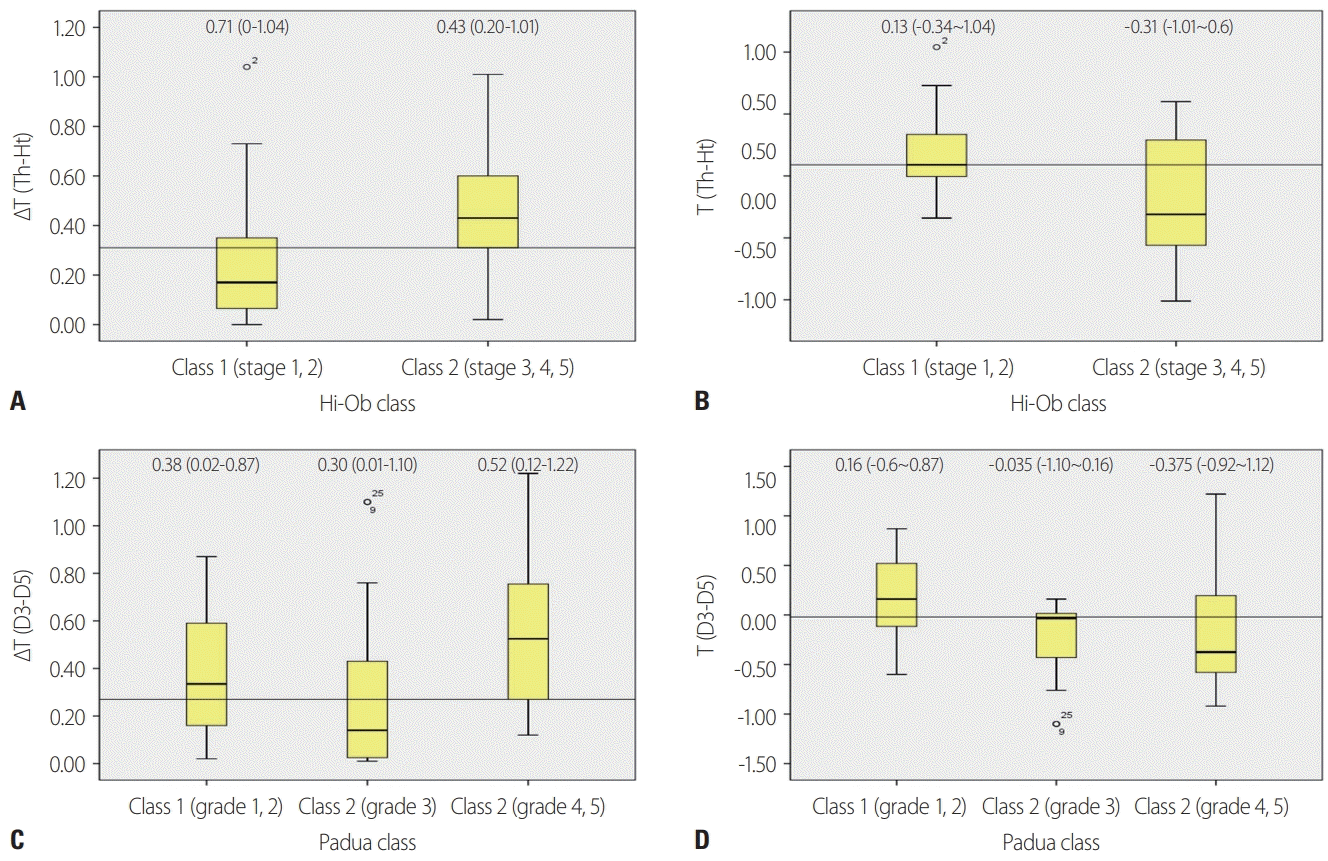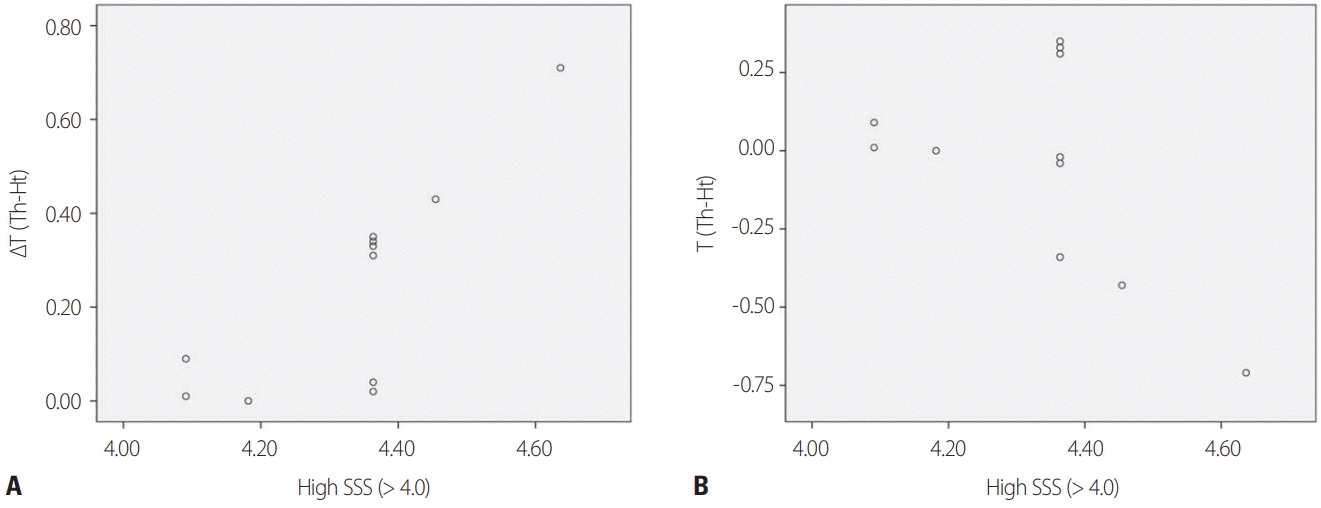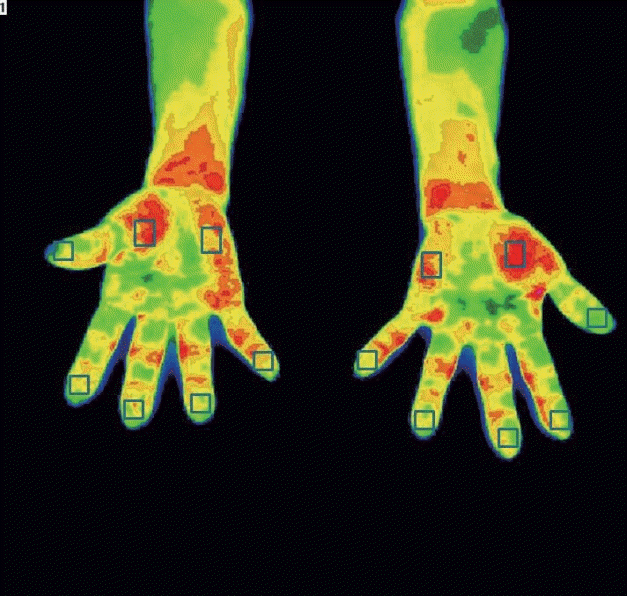1. Rempel D, Evanoff B, Amadio PC, de Krom M, Franklin G, Franzblau A, et al. Consensus criteria for the classification of carpal tunnel syndrome in epidemiologic studies. Am J Public Health. 1998; 88:1447–1451.

2. Witt JC, Hentz JG, Stevens JC. Carpal tunnel syndrome with normal nerve conduction studies. Muscle Nerve. 2004; 29:515–522.

3. Padua L, Padua R, Lo Monaco M, Aprile I, Tonali P. Multiperspective assessment of carpal tunnel syndrome: a multicenter study. Italian CTS Study Group. Neurology. 1999; 53:1654–1659.
4. de Campos CC, Manzano GM, Leopoldino JF, Nóbrega JA, Sañudo A, de Araujo Peres C, et al. The relationship between symptoms and electrophysiological detected compression of the median nerve at the wrist. Acta Neurol Scand. 2004; 110:398–402.

5. Chan L, Turner JA, Comstock BA, Levenson LM, Hollingworth W, Heagerty PJ, et al. The relationship between electrodiagnostic findings and patient symptoms and function in carpal tunnel syndrome. Arch Phys Med Rehabil. 2007; 88:19–24.

6. Werner RA, Andary M. Carpal tunnel syndrome: pathophysiology and clinical neurophysiology. Clin Neurophysiol. 2002; 113:1373–1381.

7. Nahm FS. Infrared thermography in pain medicine. Korean J Pain. 2013; 26:219–222.

8. Levine DW, Simmons BP, Koris MJ, Daltroy LH, Hohl GG, Fossel AH, et al. A self-administered questionnaire for the assessment of severity of symptoms and functional status in carpal tunnel syndrome. J Bone Joint Surg Am. 1993; 75:1585–1592.

9. Giannini F, Cioni R, Mondelli M, Padua R, Gregori B, D’Amico P, et al. A new clinical scale of carpal tunnel syndrome: validation of the measurement and clinical-neurophysiological assessment. Clin Neurophysiol. 2002; 113:71–77.

10. American Association of Electrodiagnostic Medicine; American Academy of Neurology; American Academy of Physical Medicine and Rehabilitation. Practice parameter for electrodiagnostic studies in carpal tunnel syndrome: summary statement. Muscle Nerve. 2002; 25:918–922.
11. Werner RA, Andary M. Electrodiagnostic evaluation of carpal tunnel syndrome. Muscle Nerve. 2011; 44:597–607.

12. Padua L, LoMonaco M, Gregori B, Valente EM, Padua R, Tonali P. Neurophysiological classification and sensitivity in 500 carpal tunnel syndrome hands. Acta Neurol Scand. 1997; 96:211–217.

13. Campero M, Verdugo RJ, Ochoa JL. Vasomotor innervation of the skin of the hand: a contribution to the study of human anatomy. J Anat. 1993; 182(Pt 3):361–368.
14. Jones BF. A reappraisal of the use of infrared thermal image analysis in medicine. IEEE Trans Med Imaging. 1998; 17:1019–1027.

15. Park GY, Chun SI, Park CI, Yim SY, Kim AY, Shin DB. Comparison of CT-myelography, electromyography and digital infrared thermographic imaging in lumbar herniated nucleus pulposus. J Korean Acad Rehab Med. 1993; 17:42–50.
16. Harper CM Jr, Low PA, Fealey RD, Chelimsky TC, Proper CJ, Gillen DA. Utility of thermography in the diagnosis of lumbosacral radiculopathy. Neurology. 1991; 41:1010–1014.

17. Meyers S, Cros D, Sherry B, Vermeire P. Liquid crystal thermography: quantitative studies of abnormalities in carpal tunnel syndrome. Neurology. 1989; 39:1465–1469.

18. Ming Z. Upper limb musculoskeletal disorders with special reference to sympathetic nerve functions and tactile sensation [dissertation]. [Kuopio]: University of Kuopio;2007. p. 93.
19. Verghese J, Galanopoulou AS, Herskovitz S. Autonomic dysfunction in idiopathic carpal tunnel syndrome. Muscle Nerve. 2000; 23:1209–1213.

20. Truini A, Padua L, Biasiotta A, Caliandro P, Pazzaglia C, Galeotti F, et al. Differential involvement of A-delta and A-beta fibres in neuropathic pain related to carpal tunnel syndrome. Pain. 2009; 145:105–109.

21. Schmid AB, Bland JD, Bhat MA, Bennett DL. The relationship of nerve fibre pathology to sensory function in entrapment neuropathy. Brain. 2014; 137(Pt 12):3186–3199.

22. Aminoff MJ. Involvement of peripheral vasomotor fibres in carpal tunnel syndrome. J Neurol Neurosurg Psychiatry. 1979; 42:649–655.

23. Lane LB, Starecki M, Olson A, Kohn N. Carpal tunnel syndrome diagnosis and treatment: a survey of members of the American Society For Surgery of the Hand. J Hand Surg Am. 2014; 39:2181–2187. e2184

24. Ming Z, Zaproudina N, Siivola J, Nousiainen U, Pietikainen S. Sympathetic pathology evidenced by hand thermal anomalies in carpal tunnel syndrome. Pathophysiology. 2005; 12:137–141.

25. Mondelli M, Vecchiarelli B, Reale F, Marsili T, Giannini F. Sympathetic skin response before and after surgical release of carpal tunnel syndrome. Muscle Nerve. 2001; 24:130–133.

26. Goadsby PJ, Burke D. Deficits in the function of small and large afferent fibers in confirmed cases of carpal tunnel syndrome. Muscle Nerve. 1994; 17:614–622.

27. Zyluk A, Kosovets L. An assessment of the sympathetic function within the hand in patients with carpal tunnel syndrome. J Hand Surg Eur Vol. 2010; 35:402–408.

28. Clarke C, Christensen C, Curran MWT, Chan KM. Assessment of small sensory fiber function across the spectrum of severity in carpal tunnel syndrome patients. Muscle Nerve. 2017; 56:814–816.

29. Herrick RT, Herrick SK. Thermography in the detection of carpal tunnel syndrome and other compressive neuropathies. J Hand Surg Am. 1987; 12(5 Pt 2):943–949.

30. So YT, Olney RK, Aminoff MJ. Evaluation of thermography in the diagnosis of selected entrapment neuropathies. Neurology. 1989; 39:1–5.

31. Mondelli M, Reale F, Sicurelli F, Padua L. Relationship between the self-administered Boston questionnaire and electrophysiological findings in follow-up of surgically-treated carpal tunnel syndrome. J Hand Surg Br. 2000; 25:128–134.







 PDF
PDF Citation
Citation Print
Print




 XML Download
XML Download